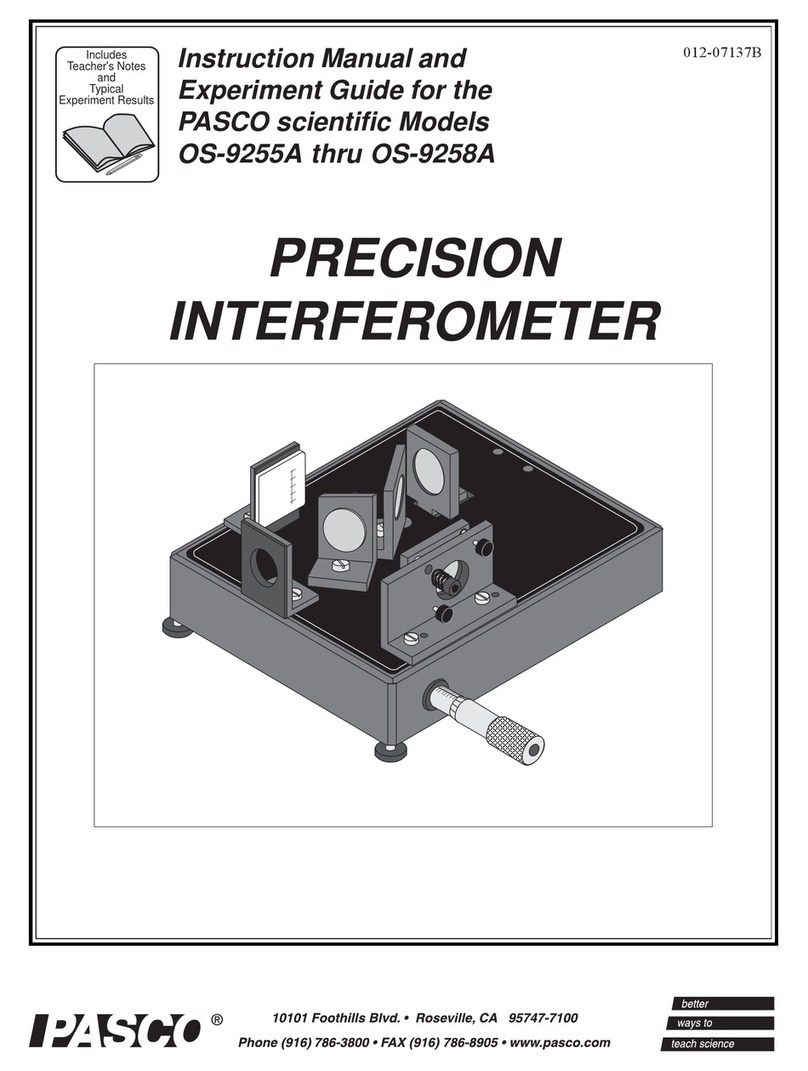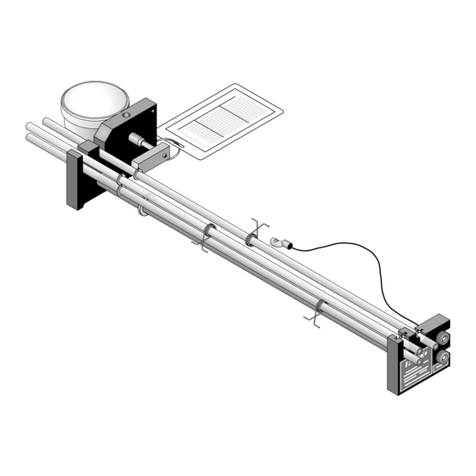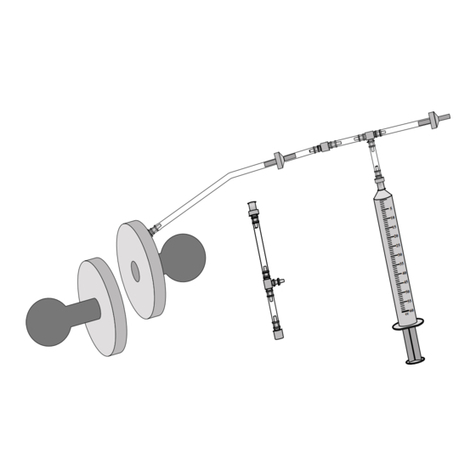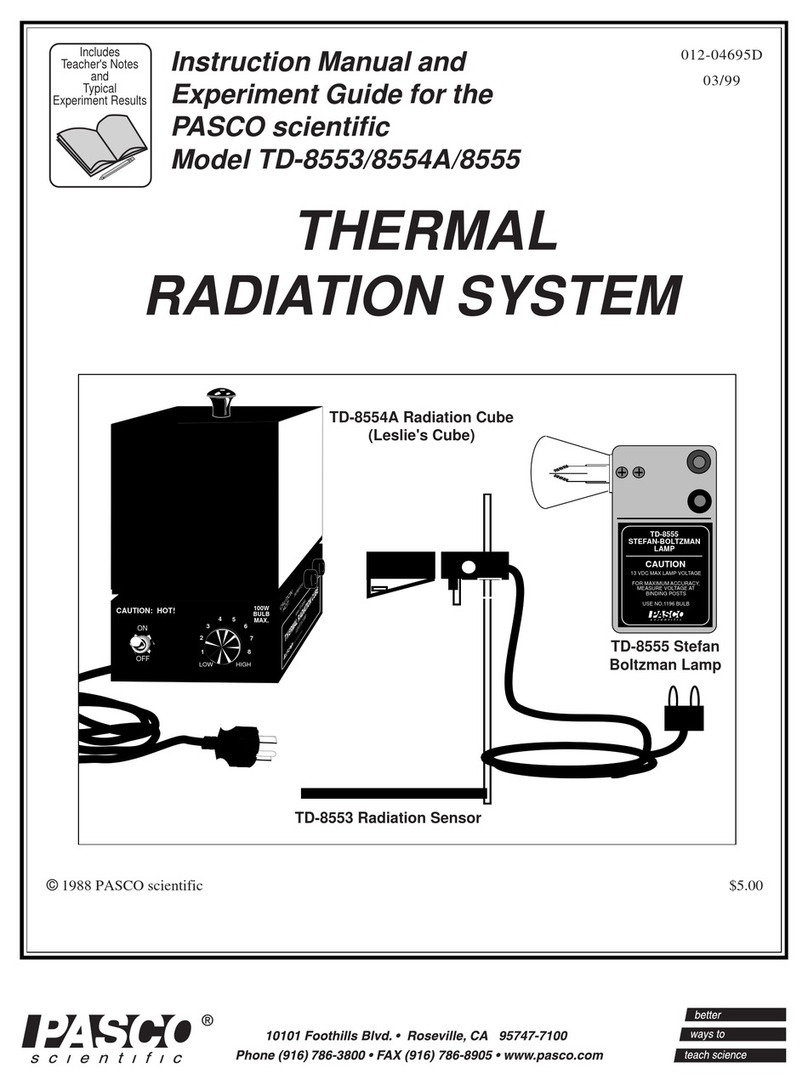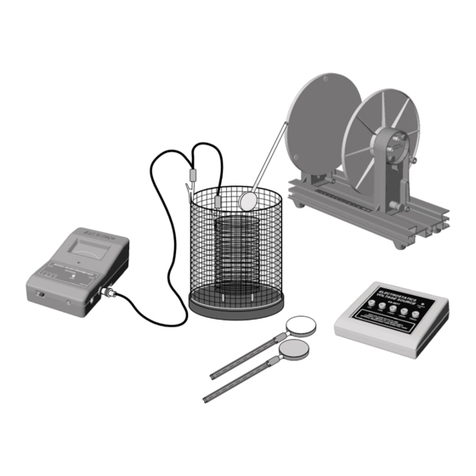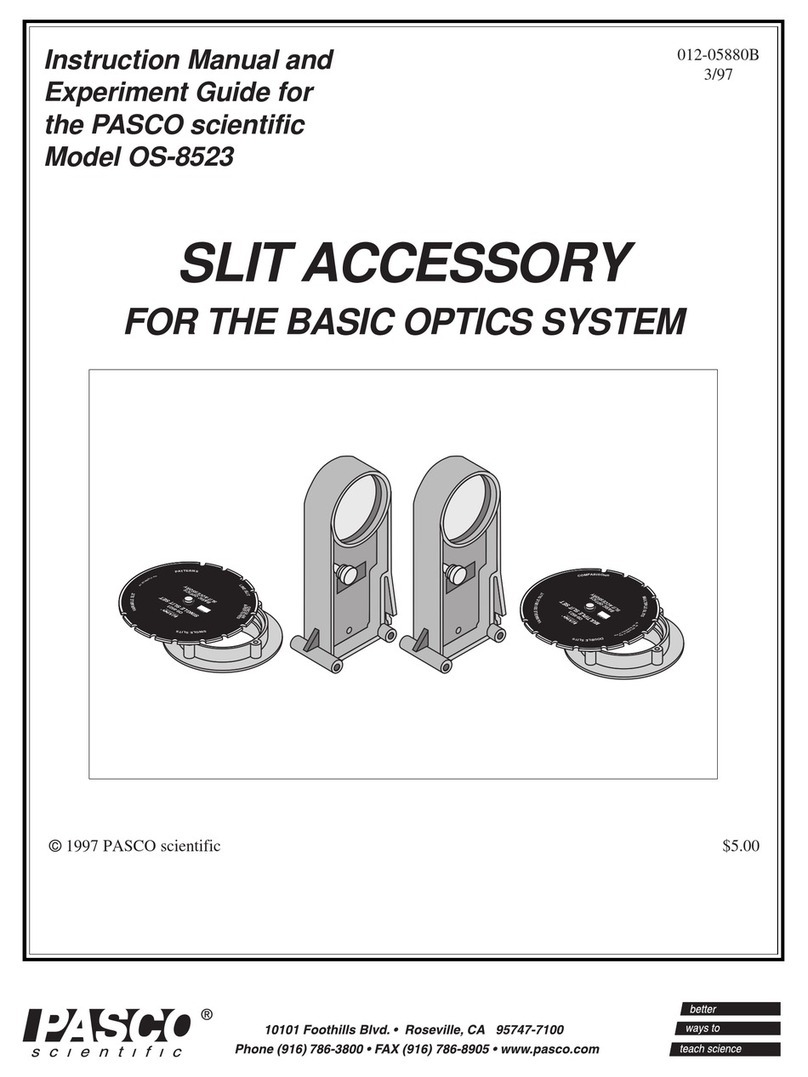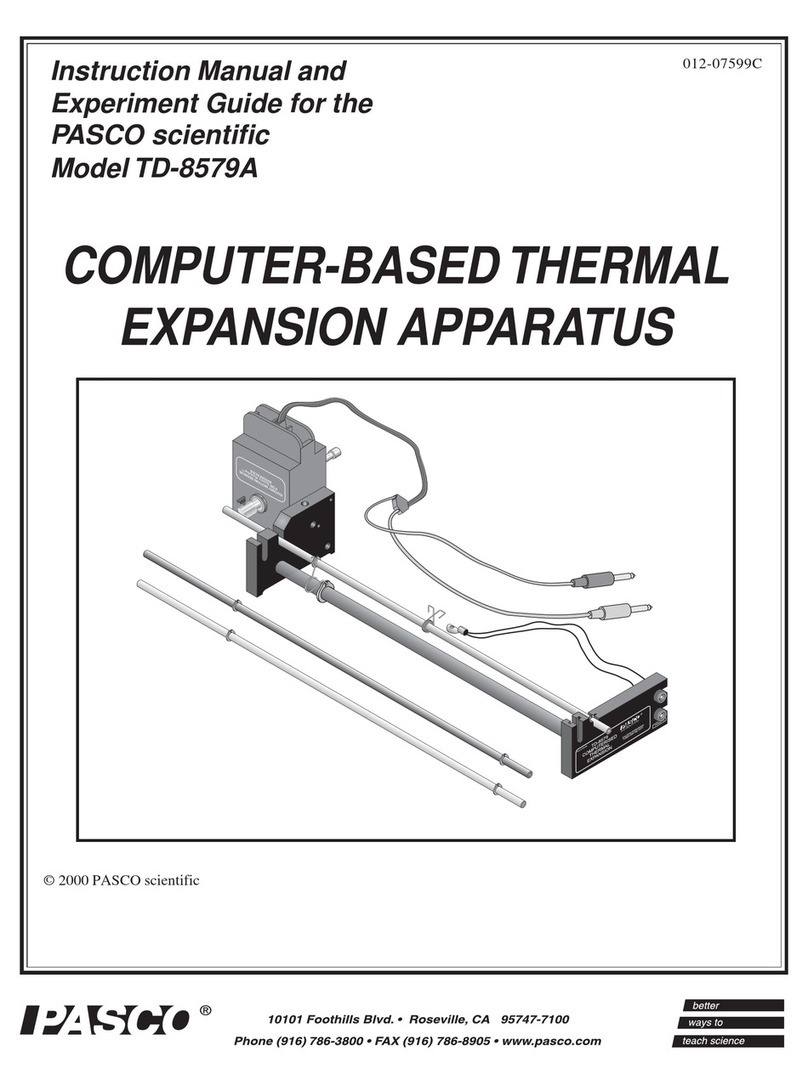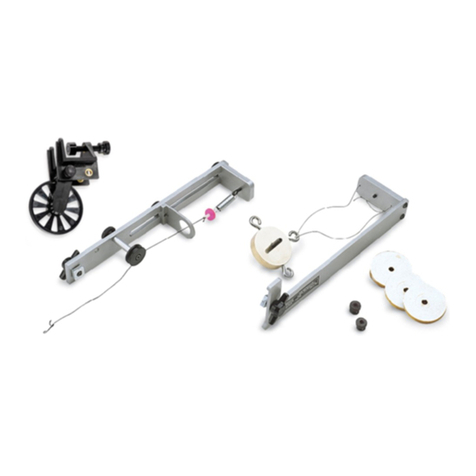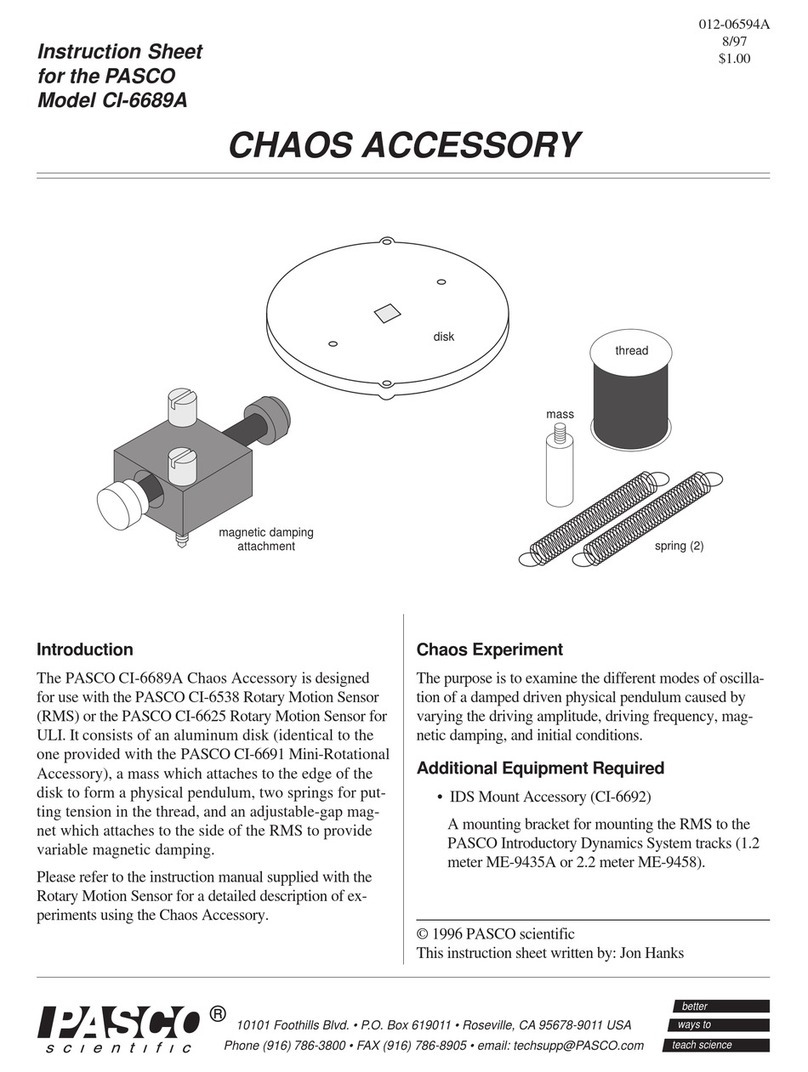
012-05375B Ballistic Pendulum/Projectile Launcher
1
®
Introduction
The PASCO ME-6830/ME-6831 Ballistic Pendulum/
Projectile Launcher (BPPL) has been designed for
projectile experiments and demonstrations as well as the
classic Ballistic Pendulum experiments. The only
additional equipment required is a C-clamp for clamping
the launcher to a table. The features of the Ballistic
Pendulum/Projectile Launcher include:
•LAUNCH AT ANY ANGLE: Balls can be
launched at any angle from zero to 90 degrees mea-
sured from the horizontal. The angle is easily ad-
justed using thumb screws. The built-in protractor
and plumb-bob on the side of the launcher give a con-
venient and accurate way of determining the angle of
inclination.
•THREE RANGE SETTINGS: There are three
ranges from which to choose. For the Short Range
Projectile Launcher these three ranges are approxi-
mately 1.2 meters, 3 meters, and 5 meters, when the
angle is 45 degrees. For the Long Range Demonstra-
tion Projectile Launcher, the three ranges are approxi-
mately 2.5 meters, 5 meters, and 8 meters. The differ-
ence between these two versions of the Projectile
Launcher is the strength of the spring. The long range
version is intended for large classroom demonstra-
tions and should not be used with the Ballistic Pendu-
lum base.
•FIXED ELEVATION INDEPENDENT OF
ANGLE: The Projectile Launcher pivots at the
muzzle end so the elevation of the ball as it leaves the
barrel does not change as the angle is varied. The
base has three sets of slots. The top curved slot is
used when it is desired to change the angle and the
center two slots are used when it is desired to shoot
horizontally only. The bottom mounting holes are for
use with the Ballistic Pendulum experiment.
•REPEATABLE RESULTS: There is no spin on the
ball since the piston keeps the ball from rubbing on
the walls as it travels up the barrel. The sturdy base
can be secured to a table with a C- clamp (not in-
cluded) so there is very little recoil. The trigger is
pulled with a string to minimize any misalignment
caused by other methods of trigger release.
➤➤
➤➤
➤IMPORTANT: Experimental results can be
further improved by making sure that the ball does
not stick to the blue vibration damping ring prior to
being launched. This is particularly critical for the
long range setting and for launching angles above
30°. To assure the ball does not stick to the ring,
push it gently with a pencil from the back of the barrel.
•BARREL SIGHTS AND SAFETY PRECAU-
TIONS: The sights for aiming the Projectile
Launcher can be viewed from the back of the launcher
by looking through the back end of the barrel.
➤➤
➤➤
➤WARNING: Never look down the front of the
barrel because it may be loaded. To see if the ball is in
the barrel and to check whether the Projectile Launcher
is cocked, look at the slots in the side of the barrel.
The yellow indicator seen through the side slot
indicates the position of the piston. The ball can also
be seen through these slots when it is in the piston.
•COMPUTER COMPATIBLE: Photogates can be at-
tached with the ME-6821 Photogate Mounting Bracket
to connect the Projectile Launcher to a computer for mea-
suring the muzzle speed. Also, a photogate at the muzzle
and an ME-6810 Time-of-Flight Accessory can be used
to time the flight of the ball.
•COMPACT STORAGE: The Projectile Launcher
stores away in a small space. The ramrod attaches to
the Projectile Launcher with Velcro® and the
launcher can be turned vertically so it takes up the
minimum amount of space on the shelf.
•RELIABLE BALL-CATCHER MECHANISM:
The sensitive spring-loaded barb-type catch on the
pendulum will catch balls with a large range of mo-
menta. In addition, the ball is held in line with the
pendulum rod for best accuracy.
•REMOVABLE PENDULUM: All moving parts of
the pendulum may be removed so that the mass and
the center of mass can be easily determined. In addi-
tion, the pendulum can be reversed to compare the ef-
fects of inelastic and elastic collisions.
•VARIABLE-MASS PENDULUM: Masses can be
added to the bottom of the pendulum so that meaning-
ful measurements can be taken with either heavy or
lightweight balls, over a wide range of velocities.
